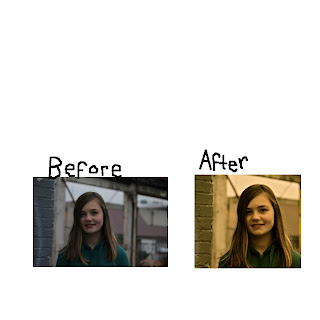Burn tool: The burn tool is used for naturally darkening a certain part of the image. It gives the darker, more mellow feeling.
Sponge tool: The sponge tool takes away any part of the image that you don't want. You could also add color or add stuff.
Clone stamp tool: It duplicates any part of the image or enhances a part. It also retouches parts of the image.
Versions: This tool is to skim through different versions of each image. You could do different edits on each image and then look at them through the timeline.
Full screen: So you can work with no distractions in a big screen. You could have every application in full screen and switch through them.
Auto Save: This tool automatically saves your work. It will save everything that you have done so you don't have to manually save the document. And so you don't loose everything you've done.
Getting pixelmator: You can edit your pictures with pixelmator. This is useful because you can edit any picture you want and do anything you want with it.
Dodge tool: to naturally lighten certain parts of the image. You can brighten darker parts and even brighten already bright parts of the image.
Smudge tool: To smeer paint, skin tones or whatever. You can make special effects with it, distortion and taking out hard edges to a subject.
Healing Tool: Touch up blemishes and wrinkles. You can also just get rid of a part of the image.
Eyedropper Tool: The eyedropper tool takes colors from the image. You can use that color whenever you want now.
Red Eye Tool: This tool easily gets rid of the red eye. Makes the image look more natural.
Layer Groups: Organizing a very busy image. You can group them into different categories or whatever order you want.
Cropping: To get rid of certain parts of the image. It easily focuses your attention to whatever part you crop.
Exporting images: This tool exports images to different formats for different uses. You can export the image to documents to use somewhere else.
Opening images: This may be helpful to edit your images. There are many different ways to open a picture so you can use whichever one is more convenient.
Polygonal lasso tool: This tool selects a part and adds effects. You can select the object or a part of the image and remove it or cut a certain part out.
Magic wand tool: This tool selects parts of your image. You can add special effects or take it out.
Marquee Tool: This tool selects parts of your image in a rectangular shape, elliptical or column Shape. You can edit the part you selected afterwards.
Lasso Tool: Allows you to draw the part you want to select yourself. Then allows you to edit that specific part.
Gradient tool: This allows you to fill the image with colors. You could do it on multiple layers and you can have multiple colors.
Unwanted Background: You can remove parts of the background that you do not want. It's helpful if there is a part of the image that is not desirable.



































